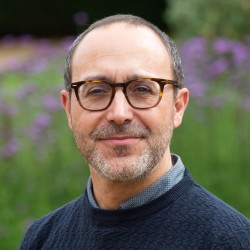Xavier Font on Sustainable Tourism
By telling tourists what not to do when it comes to sustainability the desire for them to do exactly that increases. Xavier talks about that, related topics and how to actually motivate tourists to be sustainable.
When did you join Surrey University and what opportunities have you found it is providing you?
I joined Surrey University about a year ago, which is long enough to realise just how much more you can achieve in a top-ranking university. I have excellent colleagues that are passionate about their research - everyone I talk to is in the middle of an exciting project and has something to contribute to the team. The university infrastructure is also well set up to help you raise research funds, and we are increasingly working with industry to respond to their challenges.
What is your key message to tourism businesses regarding marketing sustainable tourism?
For a long time, I have been concerned about academics and businesses seeking this holy grail of the sustainable tourist, whereas in reality we know that most of us just want to have a better holiday experience. Sustainability marketing has focused on growing that niche market, but that is not enough to change society. Raising consumer awareness of their unsustainable behaviours potentially backfires on you… think about it: when you say to a child that you can have any sweeties you want, except the red ones, which ones they want the most? This is often what we have achieved by telling tourists what not to do. This is how last chance tourism attracts more people to see polar bears, before they disappear through climate change. Surely there has to be a better way.
If we take a more pragmatic approach to how we market sustainability, and see what aspects of offering a better customer experience also happen to be more sustainable, we are likely to get the majority of society to buy products that are slightly but increasingly more sustainable. At Surrey University, we are experimenting with methods to design and communicate (sustainable) tourist experiences that are more appealing to consumers by being more experiential and emotionally engaging.
We are also looking at ways of encouraging consumers to act sustainably without even realising they are doing so, or by making it more fun. Sustainable behaviours can only be normalised by incorporating them into daily routines in exciting and desirable ways, not by making tourists go out of their way to buy something they didn’t want, instead of the thing they have been saving for all year long. Common sense you may say, but it’s clear that it is not that common.
How can marketing sustainable tourism have an impact on overtourism?
Tourist boards, and businesses alike, need to shape their marketing campaigns according to the cost-benefits. We need to remember that turnover is vanity, and profit margins are sanity. Tourist boards cannot possibly justify their existence based on increased number of tourists, attracted from far afield, but by measuring the yield achieved for each type of tourist. And that yield is not the benefit to the tourism industry, but to the destination, i.e. its residents and environment, as a result of that tourist’s visit.
“turnover is vanity, and profit margins are sanity”
A domestic or short haul tourist spends less than long haul tourist, but also the average length of stay, the locations where they spend their money, the trickle-down effect into local society, are better. Marketing campaigns seem focused on targeting first time long haul travellers, whereas more effort should be placed in attracting tourists that are less visible, that integrate more with residents, who repeat and are loyal.
Tell us more about some of your recent projects
I love sharing examples and ideas that will make these businesses more unique and profitable as a result of implementing more creative sustainability practices, and learning how to communicate these in an engaging way. I run courses on how to market and communicate sustainability. So far, we have run over 120 courses with more than 2,500 participants across Europe, mostly small tourism businesses.
I also consult with larger businesses to test marketing and communication changes. For example, changes of towel reusage messages we’ve been testing with Tui suggest potential savings of €1.8m per year, while our tests with Lufthansa City Center travel agency on how to present sustainability information in a more appealing way to travel agents will demonstrate results later this year.
In 2016, we prepared the Catalan Tourism Agency’s sustainability action plan for the International Year of Sustainable Tourism for Development, and in 2017 I wrote recommendations for the government of Barcelona to change the marketing functions in order to promote more sustainable development in the city, some of which are now incorporated into the new city’s 2020 tourism strategy.
I also have a five-year contract with the Association of Independent Tour Operators (AITO), to help their members develop sustainability pledges to protect the destinations they visit. The innovative part of this project is the emphasis on reporting the impact achieved as a result of implementing these pledges, and sharing these findings in ways that are positive and encouraging.
So what’s next? Well, that might depend on who is reading this interview, as I am always open to new collaborations. In Surrey, we have capacity to take on new industry projects and we welcome new PhD applicants to contribute to our research agenda.
Read more about Xavier’s creative methods of sustainable tourism production and consumption for the tourism and hospitality industries: Xavier Font and have a look at the activities of our Sustainability and Wellbeing in the Visitor Economy research group.
